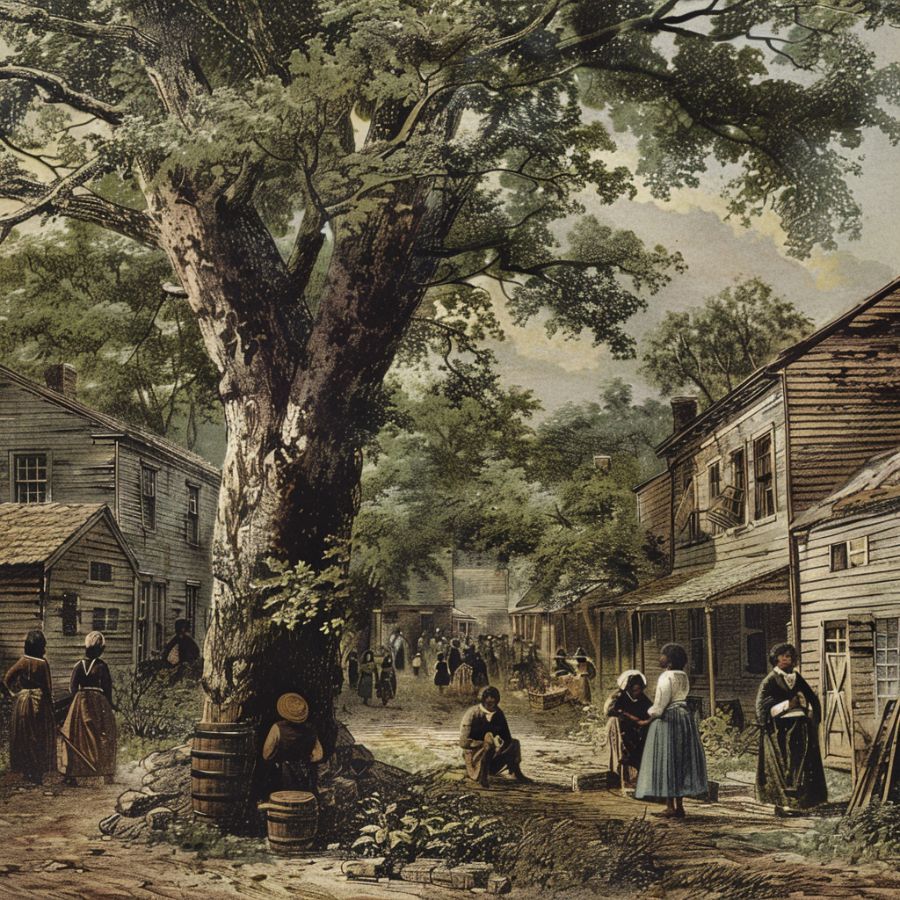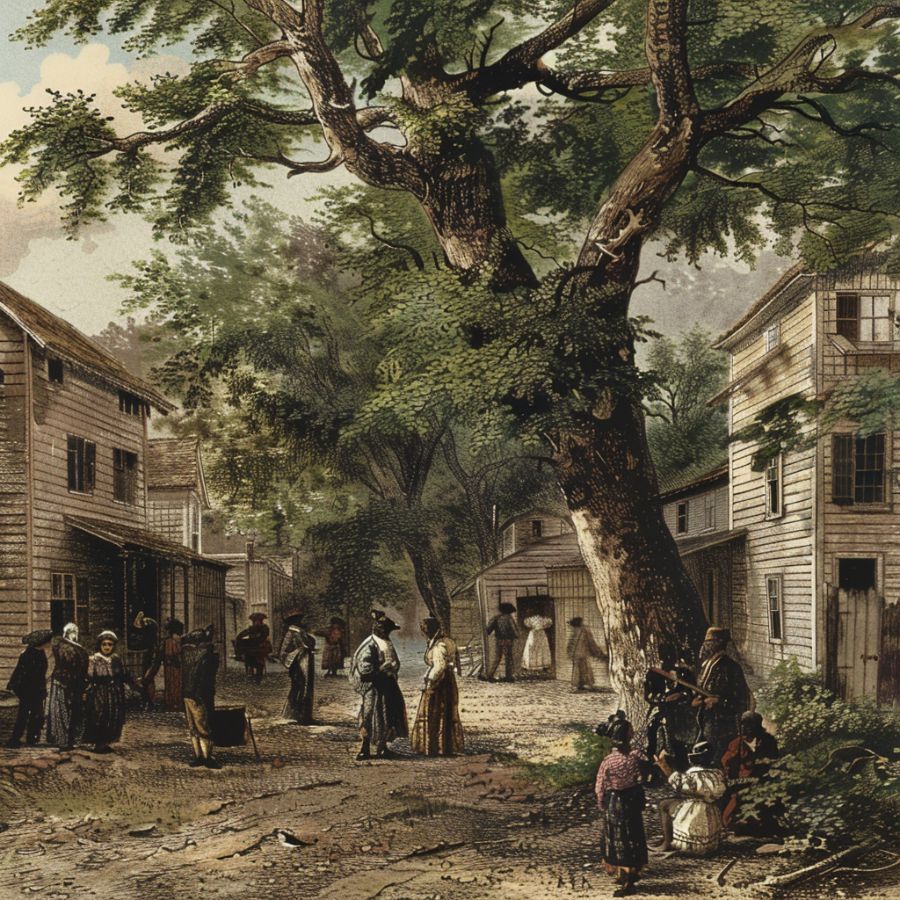With its rich history and intriguing past, Seneca Village in New York City holds a fascinating tale waiting to be uncovered. Established in the 1820s, this thriving community was home to a diverse population, including African American landowners and Irish immigrants. However, despite its vibrant existence, Seneca Village was eventually razed to make way for the construction of Central Park. Uncover the real story behind Seneca Village and learn about the lives of its residents, their struggles, and the ultimate fate of this once-thriving neighborhood.

The Establishment of Seneca Village
Founding and Settlers
The establishment of Seneca Village in the early 1800s marked a significant moment in New York’s history. The village was founded by a group of free African American landowners, many of whom had purchased their lots and homes to escape the crowded and impoverished conditions of lower Manhattan.
Growth and Community Development
For decades, Seneca Village thrived as a tight-knit community, with residents building homes, schools, and churches that served as the heart of their neighborhood. Despite facing discrimination and challenges, the villagers persevered and created a vibrant community that was a stark contrast to the bustling city that surrounded them.
A strong sense of community and shared identity propelled Seneca Village to flourish, with residents forming bonds that transcended race and class boundaries. The village became a haven for those seeking a better life and a sense of belonging in a city that often marginalized them.
Life in Seneca Village
Demographics and Diversity
Some of the fascinating aspects of life in Seneca Village revolved around its demographics and diversity. Established in the early 19th century, the village was home to a diverse community of predominantly African American residents, as well as Irish and German immigrants.
Social and Economic Aspects
On the social and economic front, Seneca Village provided a unique and relatively prosperous living environment for its residents. With a population of about 300 people at its peak, the village boasted skilled laborers, business owners, and landowners who thrived in their community.
With its own school, three churches, and various businesses including a shoe store, two churches, and a cemetery, Seneca Village offered a self-sustaining and close-knit society within the bustling metropolis of New York City.
Another Perspective
Another interesting aspect of the social and economic structure of Seneca Village was the level of autonomy and independence its residents enjoyed. Owning property and businesses provided a sense of stability and agency that was not always accessible to other marginalized communities of that era.
The Displacement and Destruction of Seneca Village
Expansion of New York City and Eminent Domain
Many historical accounts point to the expansion of New York City in the mid-19th century as the driving force behind the displacement and destruction of Seneca Village. The growing urban population and the need for infrastructure led the city to seek land for public projects, including the development of Central Park.
Consequences for Residents
With the city invoking eminent domain, the residents of Seneca Village faced forced evictions and the loss of their homes, churches, and community. Many residents were African American landowners, and the destruction of Seneca Village meant the erasure of a thriving and self-sustaining community.
To make matters worse, the residents of Seneca Village were not adequately compensated for their loss. Despite their efforts to hold onto their land and homes, they were ultimately unable to prevent the city from demolishing their community.

Rediscovery and Legacy
Archaeological Findings
Findings from the archaeological digs conducted in Seneca Village have unearthed a wealth of artifacts and information about the lives of its residents. Excavations have revealed household items, coins, and even personal objects that provide insight into the daily routines and social structure of this vibrant community.
Impact on Modern Perspectives of Urban Development
For urban planners and historians, the rediscovery of Seneca Village has had a profound impact on modern perspectives of urban development. The village’s story challenges traditional narratives of progress and sheds light on the silenced histories of marginalized communities in the process of urban expansion.
This reevaluation of Seneca Village’s role in New York City’s history has sparked important conversations about the impact of gentrification, displacement, and community resilience. It serves as a reminder that histories like Seneca Village are crucial in understanding the complexities of urban development and the importance of preserving diverse narratives in our shared past.
To wrap up
From above, the real story behind Seneca Village in New York reveals a thriving community of predominantly African American landowners who were forcibly displaced to make way for the construction of Central Park in the mid-19th century. This sad chapter in New York City’s history serves as a reminder of the systemic racism and injustices faced by marginalized communities throughout American history. By understanding and acknowledging the true story of Seneca Village, we can better appreciate the resilience and contributions of its inhabitants while also recognizing the ongoing need for social justice and reparations in our society today.
FAQ
Q: What was Seneca Village in New York?
A: Seneca Village was a predominantly African American community that existed in the mid-19th century in what is now Central Park in New York City.
Q: When was Seneca Village established?
A: Seneca Village was established in 1825, and by the 1850s, it was a thriving community with over 250 residents.
Q: Why was Seneca Village significant?
A: Seneca Village was significant because it was one of the first communities of African American property owners in New York City at a time when racial segregation and discrimination were prevalent.
Q: What happened to Seneca Village?
A: Seneca Village was razed in the 1850s to make way for the construction of Central Park. The residents were forced to move, and the village was largely forgotten until recent archaeological excavations shed light on its history.
Q: What can we learn from the story of Seneca Village?
A: The story of Seneca Village highlights the erasure of African American history and communities in the development of cities like New York. It serves as a reminder of the importance of preserving and acknowledging marginalized histories.
Also read our article : Celebrating Black Women’s Empowerment: Michelle Obama’s Black Girl Rock










